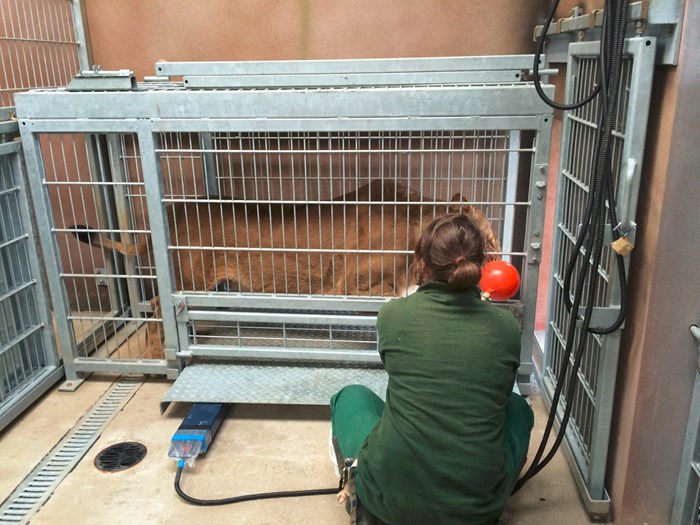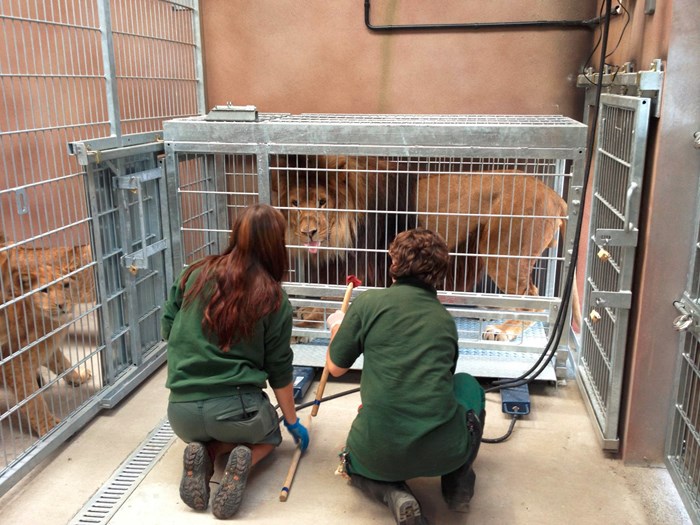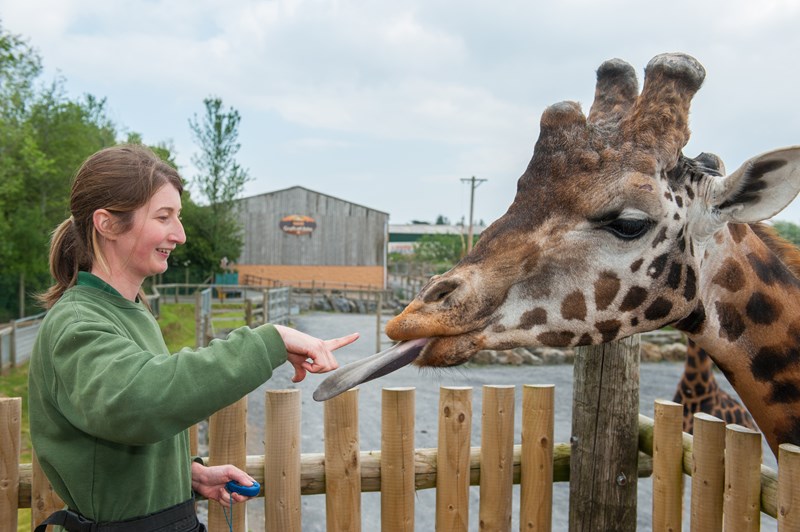Animal training is an important part of the role of a zoo keeper
But we’re not talking about training animals to do tricks here. Training our animals to happily report for routine health checks is better for the animal and for our keepers and veterinary partners. It means we can easily carry out examinations or take urine and blood samples without the stress of having to dart an animal. Anaesthetising, or knocking out, large animals carries a risk, so training can help eliminate this risk.

Here Fliss is training Luna to step onto the weighing scales
Craig and Fliss, our rhino and lion keepers, recently attended a four-day animal training conference at Twycross Zoo. The conference included a day with Steve Martin, a world renowned animal trainer who works at Disney’s Animal Kingdom. They learned different approaches and styles to training. Fliss asked Steve for help and advice on training lions and came away with three new training programme ideas to try with Hugo and the pride.

Getting Hugo to report happily to a “crush” tunnel means our vets can easily take blood and urine samples without causing him unnecessary stress.
As part of the conference they spent a day at the West Midlands Police dog headquarters. Here they got to meet six week old puppies, adult service dogs and see demonstrations on how the service dogs are trained and worked.
Animal training techniques were discussed by keepers from all over the world including America, Russia and Tanzania and the conference has given Fliss and Craig lots of ideas to share with their zoo keeping colleagues to apply to the animals they work with.

Here Pippa, our giraffe keeper, is using a clicker to train our giraffes to stick their tongues out, she can then check the tongue is healthy.
Watch animal training in practice
You can watch our keepers target train Hugo and Manyara in these behind-the-scenes videos. Whilst our keepers are training they are able to carry out visual health checks on our animals.
[InsertVideo video=https://www.youtube.com/embed/Z29r9rZ5-EM?rel=0 fullscreen=true height=315 width=512]
[InsertVideo video=https://www.youtube.com/embed/ZL6SxXpm-B8?rel=0 fullscreen=true height=315 width=512]